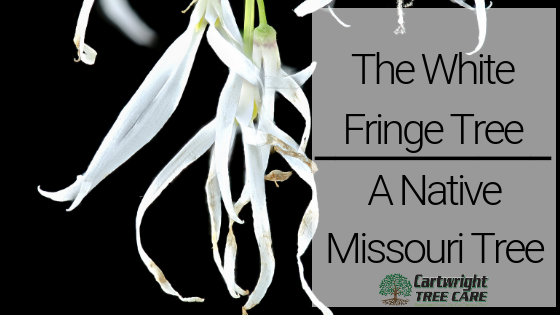
Today's blog is all about the White Fringe Tree. Before we begin discussing, let me mention a few things. You have been provided with wells of knowledge about trees, care for your home and property, how to properly carry out work in your yard, and more by the Cartwright Tree Care team. We are very passionate about trees and our work with them and, therefore, take delight in sharing these tips and tricks with you. One thing that we've done less of is tell you about types of trees that are original to Missouri.
We aim to make our website interesting and to continue expanding our blogs with new information. In the past, Cartwright Tree Care has published a couple of articles for you to enjoy about common trees found in our Show Me State, good old Missouri. You can read one of them about the Green Ash Tree here and you can find another one about the Black Cherry Tree here! For today's purposes, though, let's talk about the White Fringe Tree.
Chionanthus virginicus is the given genus name to this species. The common name for this appealing tree is 'White Fringe Tree.' This Missouri native plant takes form in shrubs or small trees. It produces flowers of a creamy white color and requires either full sun exposure or partial shading with some sun exposure to grow most healthily and reach its full potential. Moreover, this plant can grow between twelve and twenty feet wide and twelve and twenty feet tall!
Now we will be moving onto information about the White Fringe's culture. This beauty needs less than average maintenance in the pruning department, which is a plus for those who may prefer not to take care of such chores. For those who live away from rural areas, preferring life in the city, the Chionanthus Virginicus will please you, too! Why? This plant is tolerant of polluted air and does an excellent job of adapting to urban areas. The one drawback that we found about the Fringe is that it's intolerant of any prolonged dry periods.
In all, this tree is a relatively low maintenance plant. Between its moderate sun exposure, pruning, and watering needs, it sustains a delicate balance of care needs. There's one thing we forgot to mention that you may like! This tree attracts birds. Thus, when you're ready to look outside and see these friendly creatures, you may consider planting a White Fringe Tree!
Image Source: Sam Droege for USGS Bee Inventory and Monitoring Lab
